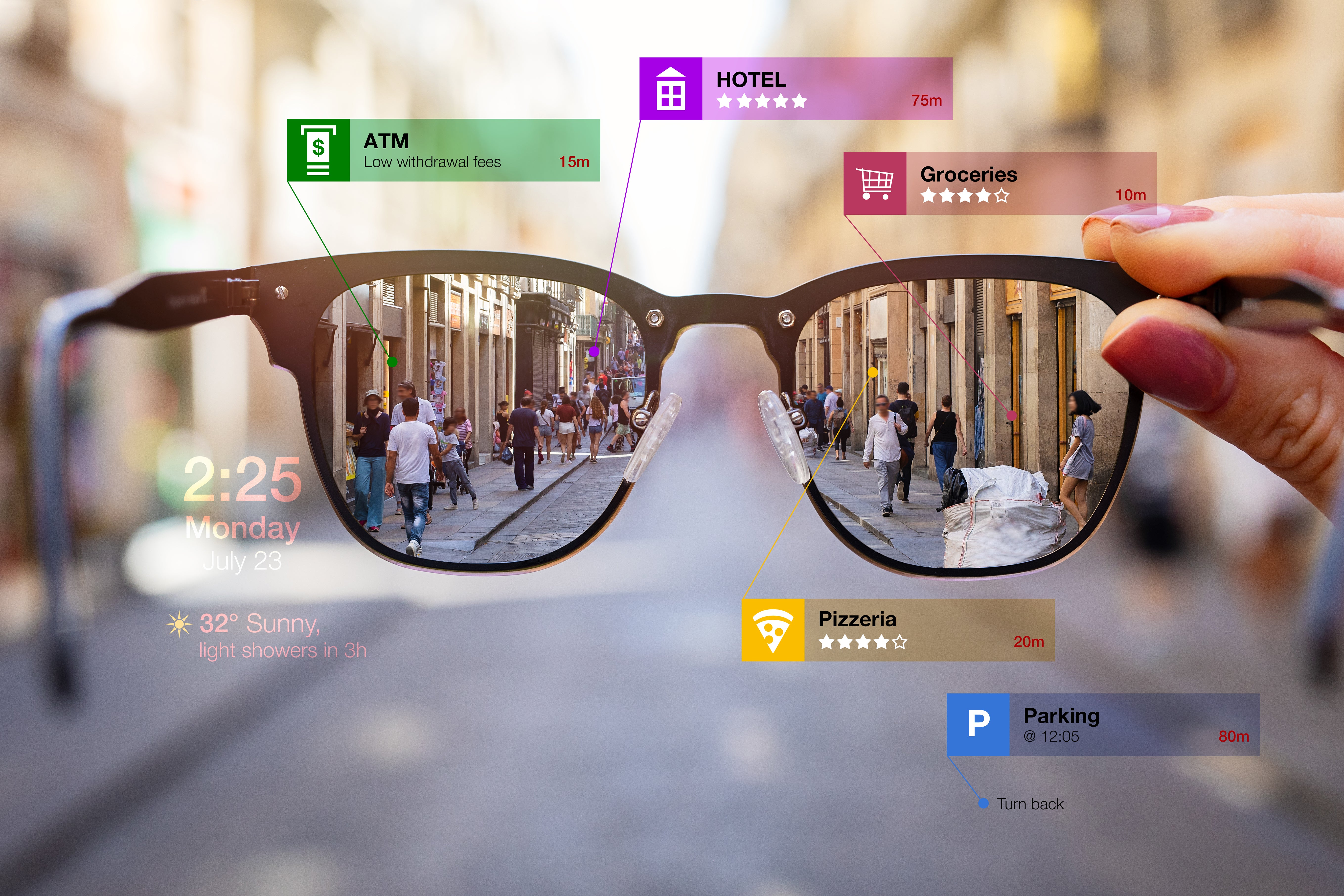Augmented Reality (AR) glasses are a type of wearable technology that allows users to see digital information overlaid onto the real world. A typical AR glasses usually consists of a display, optical components, sensors, processor, battery, input devices, and connectivity.

Display: This is the component that displays digital information over the real world. AR glasses use various types of displays such as micro-displays, waveguide displays, or projection-based displays.
Optics: The optics in AR glasses are responsible for directing the light from the display to the user's eyes. They can include lenses, mirrors, and prisms.
Sensors: AR glasses use various sensors to track the user's movements and the environment around them. These can include cameras, accelerometers, gyroscopes, and depth sensors.
Processor: The processor is responsible for processing the data from the sensors and generating the AR content to be displayed. It can be a separate device or integrated into the glasses.
Battery: AR glasses require power to function, and typically include a rechargeable battery.
Input devices: AR glasses can have various input devices, such as touchpads, voice recognition, and gesture recognition, to allow users to interact with the AR content.
The components listed above are necessary for a pair of AR glasses. Of course, to create a complete set of AR glasses, you will also need materials such as resin and metal to make the lenses and frames, just like with regular glasses.
Read more

Augmented reality, or AR, is a technology that has been gaining a lot of attention in recent years. It allows for the blending of digital information and real-world environments, creating a unique ...

Introduction SPI(Serial Peripheral interface). It was first defined by Motorola on its MC68HCXX family of processors. The SPI interface is mainly used between EEPROM, FLASH, real-time clock, ...



Leave a comment
This site is protected by hCaptcha and the hCaptcha Privacy Policy and Terms of Service apply.